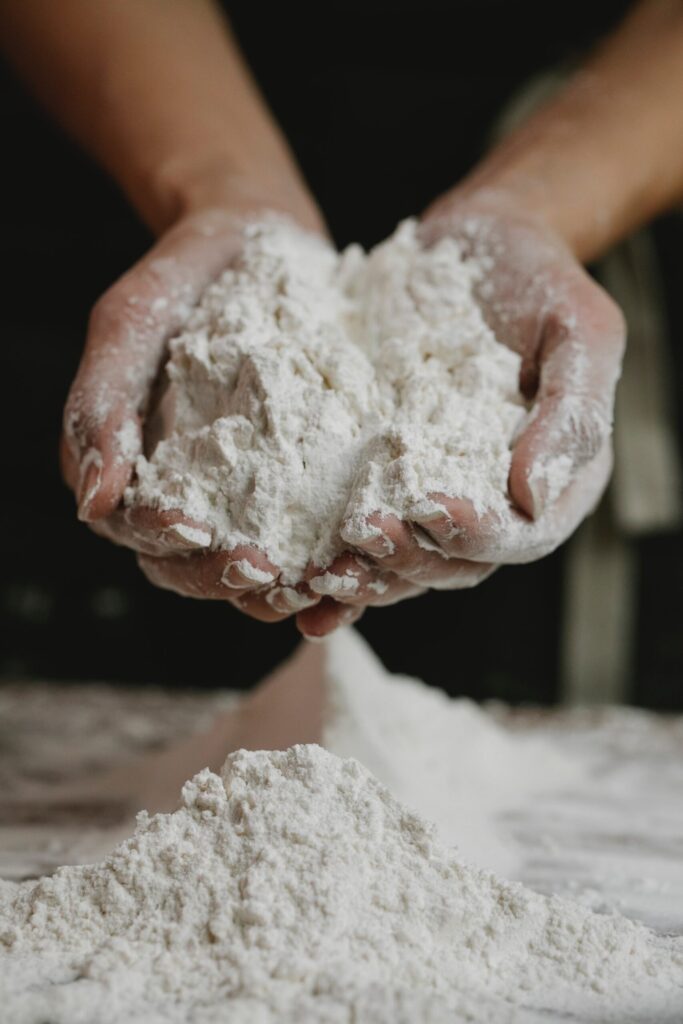Everything You Need to Know About Flour for Pizza-Making in 5 Easy Steps
Lately, it seems like a new type of flour is added to the market daily. Since flour is the principal ingredient in pizza crust, it’s essential that pizza makers find the right blend that works best for their specific pizza styles and dough type. Because it takes a lot of time away from business to research the effectiveness of each type of flour, this post was created to clear up some of the confusion for our readers.
Our Resident Chef/Pizzaiolo Felice Colucci has dedicated years to the art of baking. He feels that in order to understand the role of flour in a recipe, we need to get “back to the basics” and examine the science behind the ingredients. Working with flour from our partners, Caputo and General Mills, Felice came up with the following guidelines.
- Choose the right flour for the right pizza
First of all, there is no one flour that works best with all types of pizza. It’s important to remember that not all types of flour are created equally. So before determining which flour you’d like to use, you must first decide what kind of pizza you’ll be making in order to achieve the best results. Whether it is Neapolitan, Neo-Neapolitan, Detroit, Chicago, New York, Sicilian, or another style of pizza that you are interested in creating, each dough type has different requirements in terms of protein content, malt, and fermentation.
2. Protein Content
Chef Felice says that in order to make a great New York Style, Detroit, Sicilian, or Chicago, you should choose a flour with a high percentage of protein – 13-14.5% preferably. Pizza Napoletana, on the other hand, needs one with a lesser percentage of protein 11-13%, because in general, the thinner the pizza crusts are, the more protein they need. The higher protein content will yield a firmer, stronger, dough while lower protein contents will produce a softer dough. Furthermore, New York, Detroit and Sicilian dough types require a higher percentage of hydration than the Neapolitan which requires less hydration.
Chef Felice recommends a good bread flour for New York, Chicago, Detroit, and Sicilian pizzas, such as Gold Medal Unbleached Unbromated flour or Caputo Americana. For Pizza Napoletana and Neo Neapolitan, he recommends 00 flour made from finely ground Italian durum wheat. General mills has also made a version in the US and his favorites are Antimo Caputo pizzeria for its elastic and resistant gluten content, which is ideal for longer rising times as well as the General Mills’ Di Prim’Ordine a long-standing American baking standard.
3. Malt
A sweetening agent made from barley is known as malt. Maltose is a complex sugar made when the enzymes from the germ of the seeds become active and is added to breads and rolls for flavor. Malt helps the dough have a strong rise, great texture, and beautiful brown crust. Since New York Style pizza is cooked in a 500F degree oven, the malt really helps it to get a better-looking finish. It can also be very beneficial when making Detroit, Sicilian, and Chicago styles. You don’t want to use a malt with Pizza Napoletana or Neo-Neapolitan because unlike other pizza styles, it is cooked in an 800F–900F oven and the dough will burn. To learn more about Neapolitan pizza dough, click here.
4. Bromating
Many American pizzerias use bromated flour because using them allows you to use the dough after a much shorter fermentation – just 5-6 hours. Bromated flour is a flour that has been treated with potassium bromate, a strong oxidizing agent that comes in white crystal or powder form. While it is widely used in the United States to improve the doughs elasticity and produce a higher rise, it is not permitted in Italy and Europe, and never used in making authentic Pizza Napoletana .
5. Fermentation
Higher protein flours absorb more water – which requires a longer fermentation process.
Another benefit of longer fermentation is that it helps the body s to digest the pizza better. So once you’ve determined the type of pizza you are making and the percentage of protein that it contains, adjust your fermentation accordingly. Chef Felice recommends a minimum of 24 hours for the New York, Chicago, Sicilian, and Detroit styles that use a higher-protein content flour. The Associazione Verace Pizza Napoletana, on the other hand, recommends a levitation time of 8 hours minimum and 24 hours maximum with additional hours of kneading – 4 hours).









